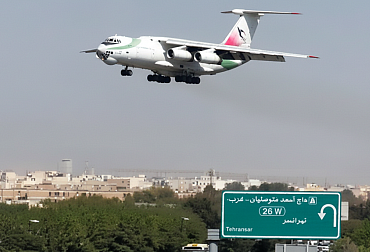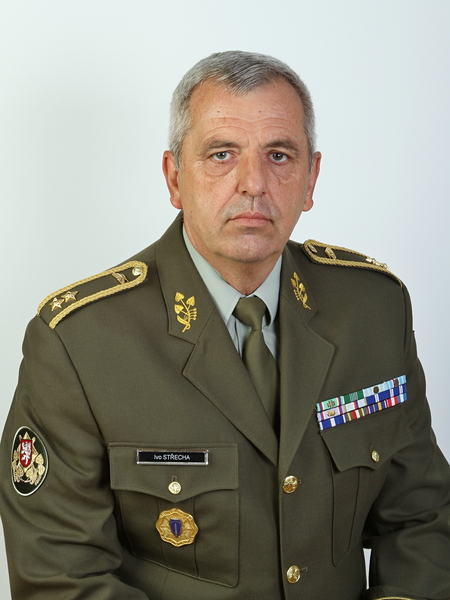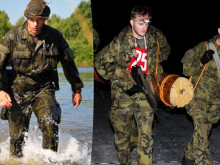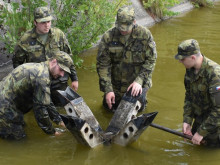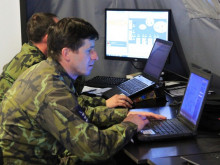The TITUS armoured vehicle is completing its military trials these days
The Czech Army is currently completing military trials of the Czech armoured vehicle TITUS (Tactical Infantry Transport & Utility System). The demanding tests are designed to test the capabilities and characteristics of the vehicle in all possible situations.
In 2017, the Ministry of Defence of the Czech Republic ordered a total of 62 TITUS armoured vehicles for the Czech Army, in three versions – 6 units in the command and staff version, 36 units in the communications version and 20 vehicles will serve as fire support coordination points. The value of the contract is CZK 6 billion.
The development and production of TITUS armoured vehicles demonstrates the successful transformation of the Czech arms industry, for which the successful implementation of the project represents a major technological leap. TITUS was created by the cooperation of Tatra Defence Vehicle, a company from Kopřivnice, France, NEXTER, a French arms company, and Retia, a company from Pardubice, which focuses on electrical military equipment. The last time a wheeled armoured personnel carrier was developed in Czechoslovakia was in the 1960s, when it was the successful OT-64 SKOT, of which 4,500 were produced and served in our Army until the 1990s. Thanks to the project, Tatra Defence Vehicle changed from a design and engineering company into a full-fledged production company and purchased new production technologies for the needs of the project implementation. The TITUS project also means strategic support for Czech industry, which is becoming competitive in the field of armoured vehicle production. The economy as such is also supported by supporting Czech companies and employees.

Thanks to the proven Tatra chassis combined with a highly resistant armoured cab, TITUS ranks among the most advanced vehicles in its category. The TITUS vehicle can accommodate a crew of four, including their equipment, personal weapons, gear and supplies. The number of crew members can vary depending on the type of vehicle. The body options allow for a sufficiently safe, comfortable and ergonomically fully compliant environment for the operators of these vehicles. The ergonomics of the new vehicles are completely incomparable to the older types of equipment used. In the design and construction of the vehicle interiors, close cooperation with the specialties of the Czech Army has been carried out to ensure the highest possible user comfort, thus reducing the unwanted workload of operators and crew, which would reduce their performance in live deployment.
However, what makes TITUS a completely unique vehicle compared to MRAP (Mine-Resistant Ambush Protected) armoured vehicles is its high level of durability and high mobility. The MRAP vehicles, which were used in large numbers in Iraq and Afghanistan, for example, were characterised by high durability, but at the expense of mobility, as the vehicles were not capable of driving in difficult terrain and had to navigate on paved roads, making them easy targets for ambushes and IEDs. In contrast, the TITUS has the same or greater durability, but thanks to the Tatra chassis, the vehicle has no problems driving on difficult terrain and can therefore be moved together with combat vehicles, and is therefore classified as a modern MRAV (Multi-Role Armoured Vehicle). As far as the electronic and communication equipment of the new TITUS for the Army is concerned, these are the most advanced technological systems within NATO military equipment. This is mainly due to several years of development, when it was necessary to adapt all systems to the requirements of the Czech Army.
The Ministry of Defence of the Czech Republic confirmed that the military tests will be completed tomorrow and then their evaluation and possible removal of the identified shortcomings will take place. The military trials are scheduled to end on 21 October 2022, when the implementation period ends. Subsequently, the evaluation and submission of the final report on the results of the tests will take place by 14 November 2022," said Klára Krištofíková, spokesperson for the Ministry of Defence.
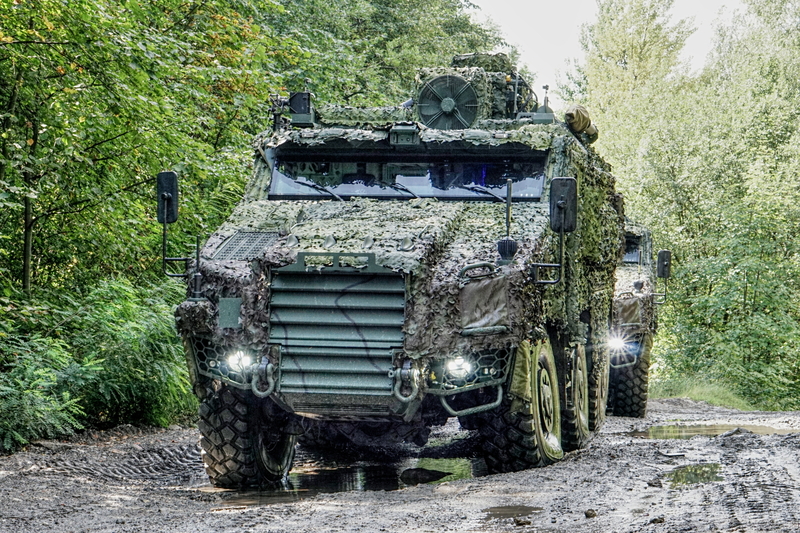
We also asked the First Deputy Chief of the General Staff, Major General Ivo Střecha, about the course of the military trials:
What all takes place during the military trials? As an example of a tested object, let's take a vehicle.
First of all, it should be said that the introduction of military equipment into use, specifically vehicles, involves a complex of tests, where military tests are preceded by company and control tests. These tests are included in the preparation and implementation of the project, together with other identified measures, in the Comprehensive Implementation Plan, which is the basic document according to which the project is then introduced into the Army.
The first tests are company tests, where the manufacturer himself tests the vehicle and determines whether the vehicle or its parts meet the specified tactical and technical requirements. This is followed by control tests, which are organised by the Ministry of Defence together with the supplier. In the case of development projects, this is the Armaments and Acquisitions Section of the Ministry of Defence. It is used to assess and verify the conformity of technical parameters using competent technical equipment and test facilities.
The last step is the aforementioned military tests. These are organised by the relevant section of the General Staff of the Czech Armed Forces and are carried out at the military units that will use the vehicle and at military training facilities. Some other units of the Ministry of Defence also participate in these tests.
The main objective of the military tests is to verify the conformity of the tactical and technical parameters of the vehicle. The principle is a practical comparison of the characteristics of the delivered vehicle with the requirements based on the concluded contract. Individual partial tests are carried out, for which so-called checklists are prepared. These describe the method and scope of the test and its evaluation.
Picture: We asked the First Deputy Chief of the General Staff Major General Ivo Střecha about the military trials | Ministry of Defence of the Czech Republic
So, in layman's terms, does the Army, for example, get a certain vehicle at its disposal and it is subsequently subjected to various practical tests?
Yes, that is exactly right. We create various situations, including extreme ones, as part of the testing. We need to be sure that the vehicle will stand up to real combat conditions. We cannot afford to jeopardise the lives of our soldiers or fail to perform our tasks.
So you are testing not only the driving characteristics, but also, for example, the vehicle's resistance to explosions, etc.?
We test the vehicle for all the required capabilities. The individual tests of the vehicle's protection level are carried out in certified testing facilities, for example, by the Military Research Institute, which is the national authority in this testing.
So, after the military tests are completed, the military can state that a given vehicle does or does not meet the needs of the military based on the tender issued?
Yes. If the vehicle has passed all required tests, compliance is established and vehicle delivery is initiated. If during the test it is determined that any of the test requirements are not met, repeat sub-tests are established. In other words, it cannot happen that the supplier delivers something that does not meet our requirements or that was not part of the contract. As I said earlier, both inspection and military testing carefully verify that our requirements match what is delivered for testing.
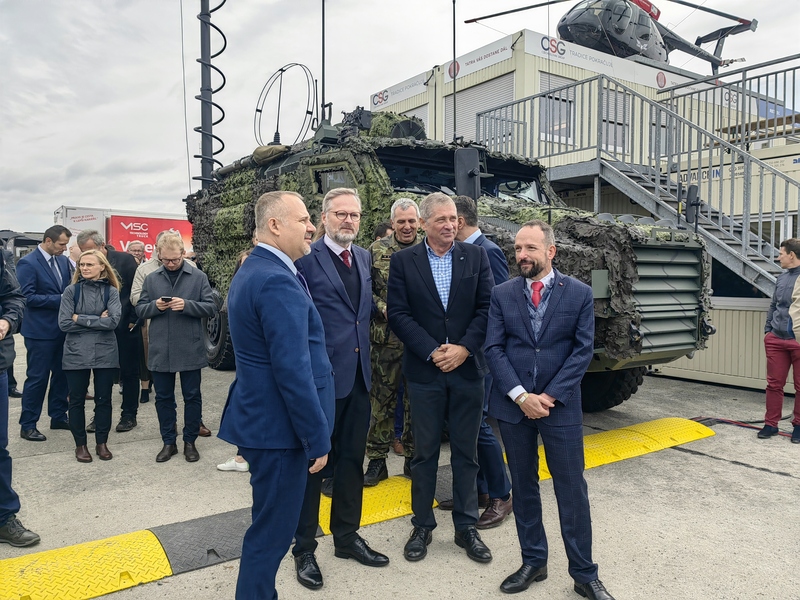 Picture: TITUS armoured vehicle at NATO Days 2022 | Tomáš Kolařík / CZ DEFENCE
Picture: TITUS armoured vehicle at NATO Days 2022 | Tomáš Kolařík / CZ DEFENCE
 Picture: TITUS armoured vehicle at the Future Forces Forum 2022 | Tomáš Kolařík / CZ DEFENCE
Picture: TITUS armoured vehicle at the Future Forces Forum 2022 | Tomáš Kolařík / CZ DEFENCE
If the tests are successful, the Czech Army is interested in more TITUS armoured vehicles. The Ministry of Defence is already negotiating the delivery of additional armoured vehicles for the gradual replacement of obsolete command and staff vehicles, MPP 40 mobile plant and communications vehicles.
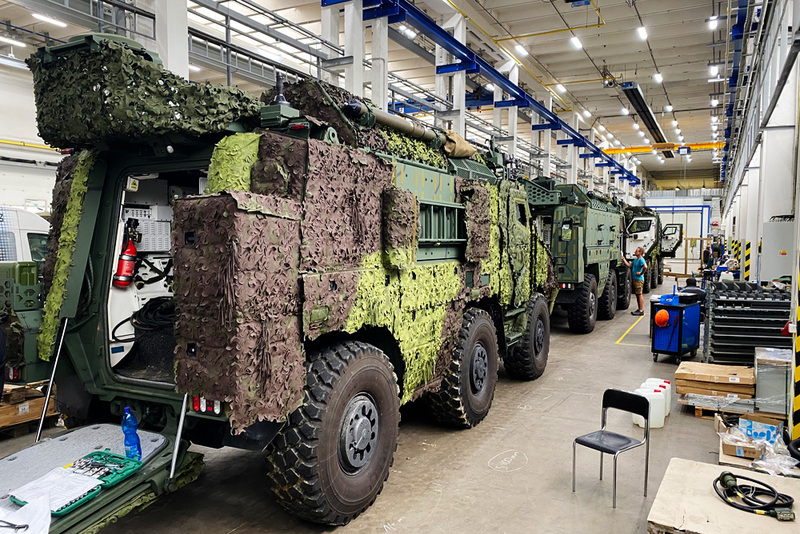 Picture: TITUS armoured vehicles for the Czech Army | Michal Pivoňka / CZ DEFENCE
Picture: TITUS armoured vehicles for the Czech Army | Michal Pivoňka / CZ DEFENCE
Armoured vehicle TITUS
- MRAV (Multi-role Armored Vehicle) category
- Crew of 4 persons, number varies by vehicle type
- High ballistic protection (STANAG 3). Body welded from heavy armoured sheet metal, with armoured plates and windows on the outside, internal walls lined with composite materials (spall liner). Effective protection against infantry weapons, heavy machine guns and artillery ammunition fragments, mines and IEDs.
- TATRA T 815-7 Force chassis with central tube and independently suspended, air-sprung semi-axles with first and third axles steerable
- Air suspension system with the possibility of changing the vehicle ground clearance. Outer turning radius 13 m, climb rate 60%, side roll value 30%. Tactical tyres 16,00 R20 with central inflation system, which allows not only adjusting the tyre pressure for different surfaces, but also driving with tyre punctures
- Vehicle speed on paved roads up to 110 km/h with a range of up to 700 km
- Universal armament carrier – Remote controlled weapon stations with the ability to mount a 12.7 mm calibre machine gun or 40 mm calibre grenade launcher. Possibility of installing a remote-controlled turret with a 20 mm rapid-fire gun and a 7.62 mm machine gun. Possibility of mounting up to three light machine guns on the hatch at the three roof hatches. Firing is also possible with a gun located in the folding ramp. Other versions of the TITUS armoured personnel carrier allow for the function of weapon system carriers – anti-tank and anti-aircraft missiles or a mortar of 120 mm calibre
- Electronic and communication systems provide classified and unclassified radio communication and data link in VHF and UKV bands and also by satellite tactical communication (SATCOM), including the use of integrated cryptomodules
- The vehicle is equipped with the already proven STAR Light 3 SF protective jammer from the Czech company URC Systems spol. s r.o. The jammer protects against the current threats of radio remotely launched IEDs, including 4G and 5G mobile communication systems. The system is ready for connection of a dedicated anti-drone jamming module (MAD). Also new is liquid cooling to reduce the jammer's build volume. The jammer succeeded in military trials
- Power is provided by an alternator connected to the vehicle's engine when the vehicle is moved. In both stationary and autonomous modes, the engine is switched off and the electronic systems are powered either from batteries, mains or a generator
- The radios and necessary components in the new MKPP vehicles will be compatible with the equipment already in place in the Czech Army. The new titles will also allow the fitting of a Battlefield Identification Friend or Foe (BIFF) system that can recognise own-foreign units
- Protection of the crew from the effects of chemical, biological and nuclear weapons












